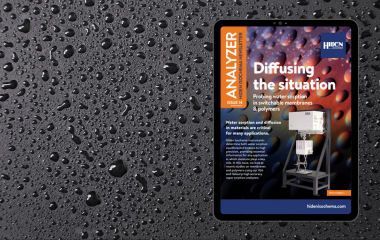Can hydrogen sorption studies enable a new era of e-mobility?
The transition to e-mobility represents a pivotal shift in the automotive industry, offering a sustainable alternative to traditional petrol-powered vehicles. At the heart of this transformation lies hydrogen fuel cells, a technology that has the potential to revolutionise how we power our vehicles. These cells produce electricity through a chemical reaction between hydrogen and oxygen, with the only byproduct being water vapour. Yet, the challenge of efficiently storing hydrogen has been a significant barrier to its widespread adoption. This is where hydrogen sorption comes into play, offering a promising solution to the storage conundrum.
Understanding Hydrogen Storage Challenges
Hydrogen, in its gaseous form, is characterised by its low density. This means that to store it in a compact manner suitable for vehicle use, it must either be kept under high pressure or at cryogenic temperatures. Both these methods come with their own sets of challenges, from safety concerns to the energy-intensive nature of cryogenic storage.
The Role of Hydrogen Sorption Studies
Hydrogen sorption studies focus on understanding how hydrogen gas can be absorbed or adsorbed onto a material. By delving deep into sorption science, researchers aim to identify materials that can store hydrogen more efficiently and safely. Two such materials that have shown promise in this domain are metal hydrides and porous materials.
Metal hydrides are compounds formed between metals and hydrogen. When hydrogen gas is passed over certain metals, it forms a bond with the metal, resulting in a metal hydride. This process allows for hydrogen storage in a much more compact form than its gaseous state. Porous materials, on the other hand, provide a structure that can trap hydrogen molecules within their pores, offering another avenue for compact storage.
Hydrogen sorption studies are often concerned with characterising metal hydrides as candidates for hydrogen storage. Promising materials include LaNi5, an AB5-type alloy that boasts rapid kinetics and ease of activation. Its potential as a hydrogen storage material was first explored in the late 1960s, but it remains a prototype hydrogen-absorbing compound. LaNi5’s interaction with hydrogen is typical of many metal-hydrogen systems. Initially, at low pressures, it absorbs a small amount of hydrogen, known as the α phase. As pressure increases, a more ordered hydride phase, the β phase, emerges. The hydrogen content surges in this phase, making it ideal for hydrogen storage. The plateau region defines its practical reversible hydrogen storage capacity. To evaluate a material for solid-state hydrogen storage, it’s crucial to understand its hydrogen uptake behaviour. Hydrogen sorption studies are central to this endeavour.
Towards a Sustainable E-Mobility Future
By harnessing the potential of hydrogen sorption, we can pave the way for a more sustainable e-mobility future. Improved hydrogen storage technologies mean fuel cell vehicles can become a viable alternative to traditional vehicles, contributing significantly to the transition towards a low-carbon economy. As the world grapples with the challenges of climate change, the importance of such transitions cannot be overstated.
Hiden Isochema and the Future of Hydrogen Storage
At Hiden Isochema, we recognise the transformative potential of hydrogen sorption studies. Our commitment to advancing the science of hydrogen storage is unwavering, and we believe that by pushing the boundaries of what’s possible, we can play a crucial role in ushering in a new era of e-mobility.
For those informed readers keen on delving deeper into the intricacies of metal hydrides and their role in hydrogen storage, we invite you to explore our dedicated section on hydrogen sorption.
The journey towards a sustainable e-mobility future is fraught with challenges. Yet, with the advancements in hydrogen sorption studies and the relentless pursuit of innovation, we are confident that this future is not just a distant dream but an imminent reality. Join us in this exciting journey towards a cleaner, greener tomorrow.


